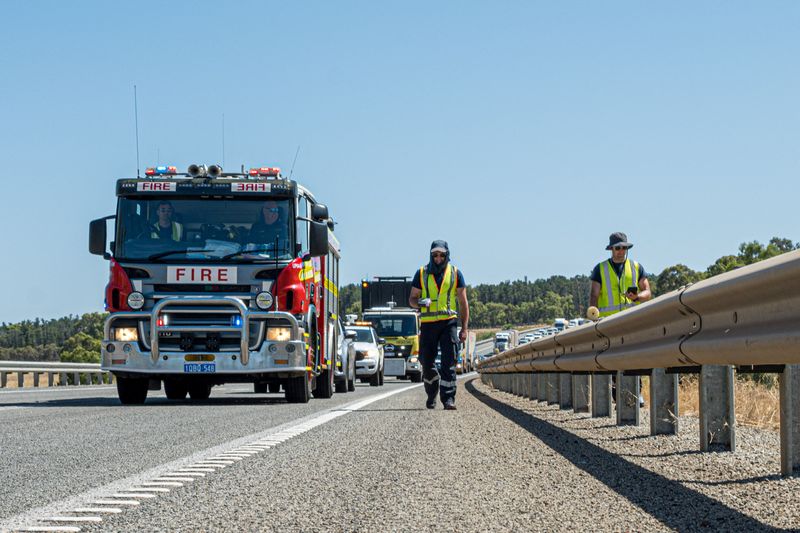
© Reuters. A handout image shows Department of Fire and Emergency Services crew searching for a radioactive capsule from a Rio Tinto mine after it disappeared on a 1400 km journey across the outback, in Australia in this picture obtained on January 28, 2023. AAP Ima
2/2
SYDNEY (Reuters) – Authorities in Australia will review laws that penalise the mishandling of radioactive material with a A$1,000 ($707) fine as a search for a hazardous capsule lost in the Outback enters a seventh day.
Officials from Western Australia’s emergency response department, defence authorities, radiation specialists and others are combing a 1,400 km (870 mile) stretch of highway for the tiny capsule, from a mining device, that was lost in transit more than two weeks ago.
The radioactive capsule was part of a gauge used to measure the density of iron ore feed being transported from Rio Tinto (NYSE:)’s Gudai-Darri mine in the state’s remote Kimberley region to a facility in the suburbs of Perth – a distance longer than the length of Great Britain.
The penalty for failing to safely handle radioactive substances is A$1,000 and A$50 per day the offence continues, according to state legislation from 1975.
“That figure is ridiculously low but I suspect that it’s ridiculously low because people didn’t think such an item could be lost,” Prime Minister Anthony Albanese told a news conference in the state capital, Perth, referring to the fine.
The silver capsule, 6 mm in diameter and 8 mm long, contains Caesium-137 which emits radiation equal to 10 X-rays per hour.
“It shouldn’t have been lost,” Albanese said.
Rio Tinto apologised for the loss on Monday. It had entrusted shipment to specialist packing and transport operators.
The state minister for health, Amber-Jade Sanderson, told the news conference her government was looking to change laws to allow for higher penalties and cost recovery in such circumstances, she said.
“The current fine system is unacceptably low and we are looking at how we can increase that,” Sanderson said.
She said the investigation suggested the loss was the result of incompetence not conspiracy.
Authorities suspect vibrations on the bumpy road loosened screws and a bolt on the gauge letting the capsule fall out. The gauge was picked up from the mine site on Jan. 12 and was unpacked for inspection on Jan. 25 when the loss of the capsule was discovered.
People have been told to stay at least five metres (16.5 feet) away from the capsule if they spot it as exposure could cause radiation burns or radiation sickness, though driving past it is believed to be relatively low risk, akin to taking an X-ray.
($1 = 1.4152 Australian dollars)


Be the first to comment